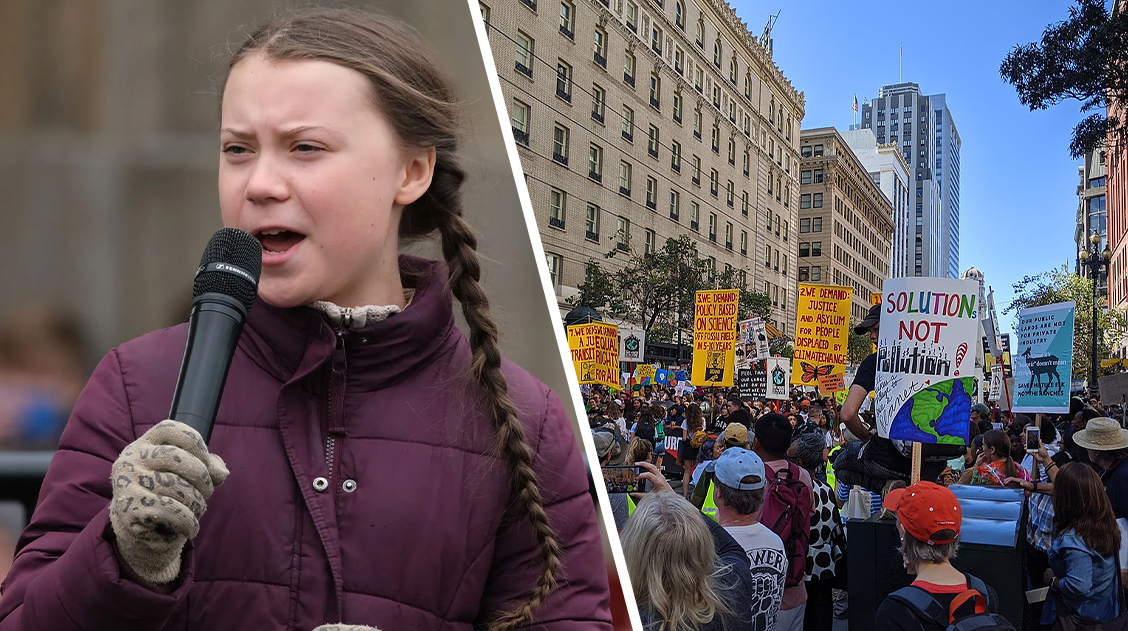
In 2019 Greta Thunberg took to the streets to protest against the lack of action on climate change. It was a busy year for climate protests. Rise for the Climate in San Francisco attracted 30,000 marchers calling for the governor to stop fossil fuel extraction. In the UK, the Extinction Rebellion kept themselves in the news with audacious road blockages and other attention-grabbing stunts.
Politicians were not entirely deaf to their “declaration of rebellion”, responding with the promise of “green growth”, a win-win for consumers, capital and the environment. Today, the mood has shifted. Road blockages are more likely to be caused by disgruntled European farmers who complain that the EU’s environmental legislation is eroding their profits.
What is green growth?
Green growth is based on the idea that for the first time since the Industrial Revolution economic growth has been decoupled from the burning of fossil fuels. Therefore, we should aim for “net zero”, with companies and countries growing their economies while reducing emissions. Offsets and carbon sequestration can be used to mop up hard-to-abate emissions.
The reality:
The plan for green growth was that this planet-saving transition would drive new jobs and industries with handy shareholder returns. As Mike Tyson warned, “Everyone has a plan until they get punched in the mouth.” Covid, the Russia/Ukraine War, rising interest rates, and now troubles in the Middle East … it seems like the world has been smacked in the mouth, and that green growth is down for the count.
How much more CO2 can we emit?
According to the IPCC report, net CO2 we can emit while limiting warming to 1.5°C (as per the aspiration of the 2015/16 Paris Agreement) is about 500 GtCO2, and 1,150 Gt if we want to stay within 2°C increase. At our present rate (40 Gt/year) we will reach our “1.5°C carbon budget” in only seven years from now. The world is not going to meet the Paris Agreement; we will likely endure planetary warming of between 2°C and 4°C in the coming decades.
Why is it so hard to reduce emissions?
There has been an increase in renewable energy, but not nearly enough to meet rising electricity demand. While technology and innovation can help reduce demand, it too relies on energy; for example, in Ireland data centres consume a fifth of the country’s electricity.
Green growth, degrowth, or business as usual?
Unfortunately, governments have tried to spin decarbonization as another growth story and not a wakeup call to save our planet. Fossil fuels are plentiful, profitable, and convenient, and their accumulated emissions are now deadly. The young, radical economist Timothée Parrique is a cause célèbre for pitching de-growth as the only solution. Which is not much of a solution for voters, entrepreneurs and shareholders.
Swiss Re’s Institute for Stress Test Analysis reports that the world is set to lose up to 18% GDP from climate change if no action is taken and we end up with 3.2°C warming; versus a loss of 11% GDP if sufficient action is taken to keep warming at 2°C. Inaction is far more expensive than action.
Conservatives criticise the green agenda for putting the environment before people, focusing on relatively minor issues like EVs versus combustion vehicles. In truth, we can’t expect consumer choice to set the pace for climate action. Consumers are motivated by various incentives; environmental concerns compete with more pressing considerations like price, status and utility. We should instead focus on big companies and on cities, who factor in medium and long-term considerations; indeed reporting standards compel them to do so.

For business, the opportunity in making solar panels, wind turbines, batteries or EVs – i.e., hardware – is limited. These are capital intensive, highly competitive, low-margin businesses with not much space for niche players. The bigger opportunity is for all businesses to take advantage of cheap renewable energy, batteries and EVs.
I recently had the privilege of talking with the head of sustainability at one of Europe’s largest logistics companies. She mentioned that their fleet of 31,000 EVs had a lower cost of ownership than they originally expected, and that it was considerably cheaper than running a comparable fleet of ICEs. This week Barclays Bank announced that it would stop “directly financing energy clients’ new oil and gas projects”. Barclays were Europe’s biggest funder of fossil fuels before being overtaken by BNP Paribas in 2022; they’ve increased their sustainability and transition finance target to $1 trillion by 2030 to help accelerate the shift to a low-carbon economy.
Other banks and corporations will follow. Their motivation I believe is two-fold: enlightened CEOs want to be on the right side of history, and their legal departments know it is only a matter of time before the litigators take on the big emitters. Green growth is happening, but not quite in the ways we predicted. At the end of 2023, half the world’s largest companies had committed to net zero, a 40% increase from 16 months prior. These companies will continue to grow with lower-carbon footprints as they adopt sustainable technologies at scale. Corporate low-carbon innovations and greentech is the space to watch, not consumer EV sales.